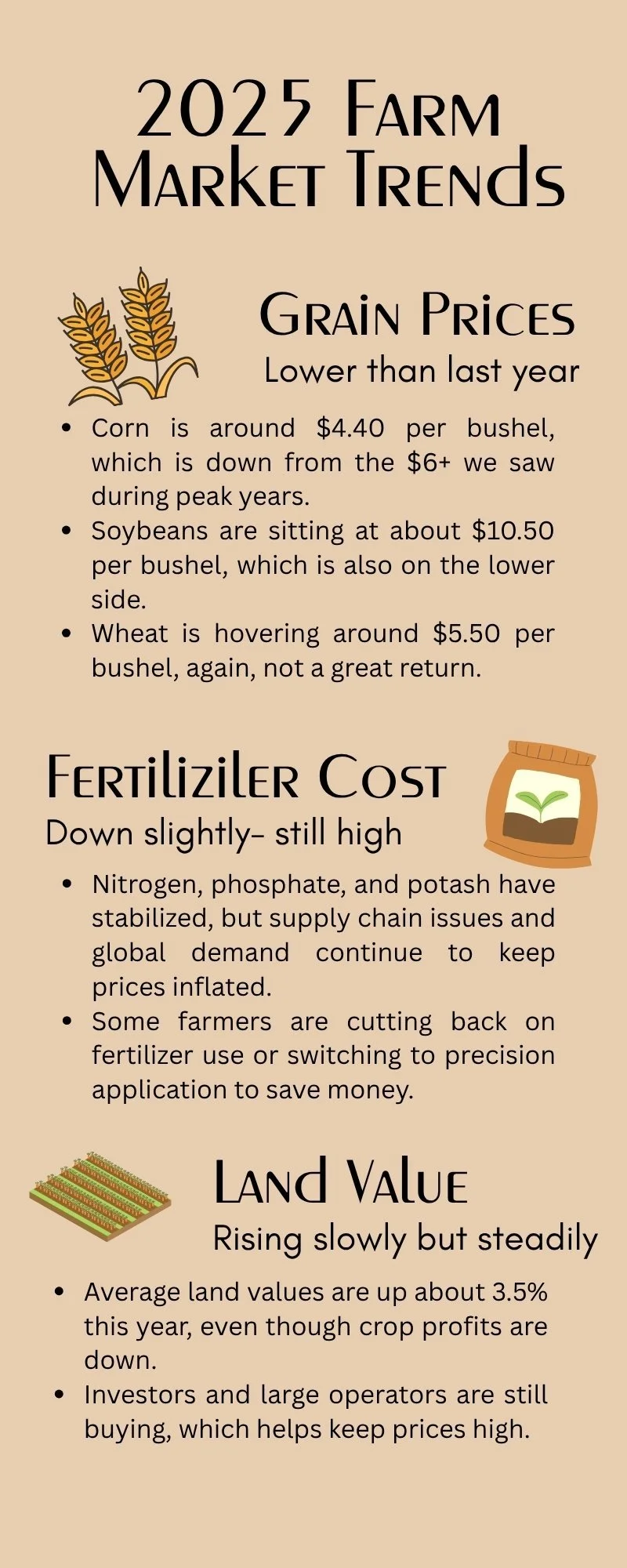Whether you're a lifelong farmer or someone who just passes cornfields on your way to work, crop prices play a big role in our local economy. But what actually determines how much corn, soybeans, or wheat are worth? The answer is a mix of global forces, local conditions, and good old-fashioned supply and demand.
Supply & Demand 101
At the heart of any price movement is the simple balance between how much crop is available and how much people want to buy. If there's a bumper crop across the U.S., prices usually fall. If drought hits major producers or international buyers increase demand, prices rise.
Global Markets & Trade
American farmers don’t just feed the U.S.—they feed the world. Crop prices are tied to international trade. If a major buyer like China boosts soybean purchases, prices typically go up. On the flip side, tariffs, political tensions, or shipping slowdowns can lead to price drops.
Weather & Natural Disasters
Weather affects both supply and the potential yield. A dry summer in the Midwest can send corn prices soaring. Hurricanes, wildfires, or frost events in other ag regions (like Brazil or Ukraine) can have a ripple effect on prices here, too.
Input Costs & Profit Margins
Farmers also have to factor in what it costs to grow a crop—seed, fertilizer, fuel, equipment, and labor. If prices don’t cover these expenses, even a “high yield” year might not mean profits. That’s why many farmers watch prices closely and use tools like crop insurance and forward contracting to hedge their bets.
Why It Matters Locally
When crop prices are low, it hits local communities hard. Farmers may delay equipment upgrades, cut back on hiring, or tighten household budgets. On the other hand, strong prices can bring a boost to rural economies—from equipment dealerships to diners to schools.
Bottom line: Crop prices are more than just numbers—they're a reflection of the land, the labor, and the global forces that shape life in the Midwest.


